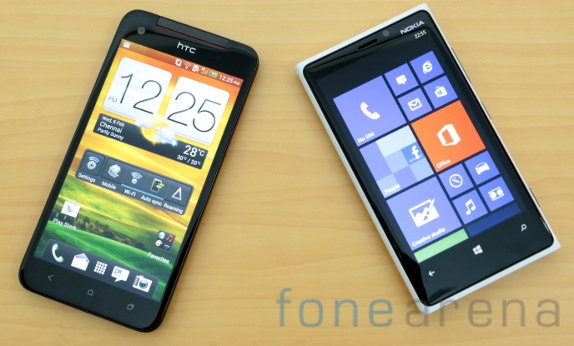
The HTC Butterfly launched very recently in India for a price of Rs.45,990, making it one of the costliest phones to buy here. You might have read our review of the HTC Butterfly, with a large emphasis on it being the first smartphone to sport a 1920×1080 screen in India. The device is a monster by every sense and we sought out to compare it with other smartphones in our labs. First up, we have the newly launched Nokia Lumia 920 for comparison. Here’s a in-depth video comparison of both these devices, read past the break to get to know more about these two devices in comparison.
httpv://www.youtube.com/watch?v=glmX4NWmBdY
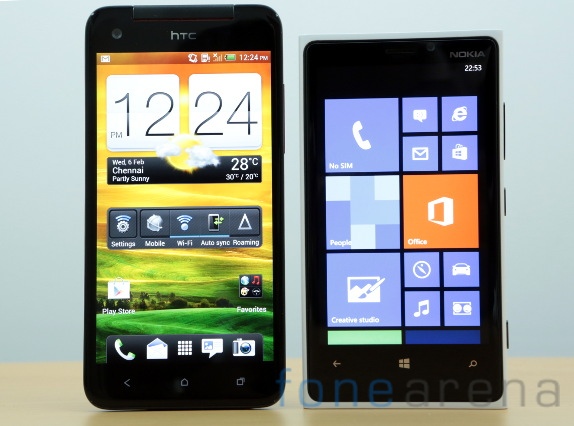
The Nokia Lumia 920 is Nokia’s most innovative smartphone, they claim. The HTC Butterfly on the other hand is at the pinnacle of display technology on a smartphone and like the One X, HTC is one of the first to market with its new SLCD3 1080p display, like how it was one of the first with the 720p display. So, the ultimate advantage HTC wants to you to take note is the display, so much that we can actually call it a display flagship if that’s even a thing. Otherwise, the hardware is pretty much what you expect out of a top end smartphone. The Lumia 920 although seems like a camera centric device with its PureView branding, but its overall rounded up features make it worthy of a company flagship. With a lot of hardware features packed into it, we put the Lumia 920 head to head with the 1080p screen-ed HTC Butterfly.
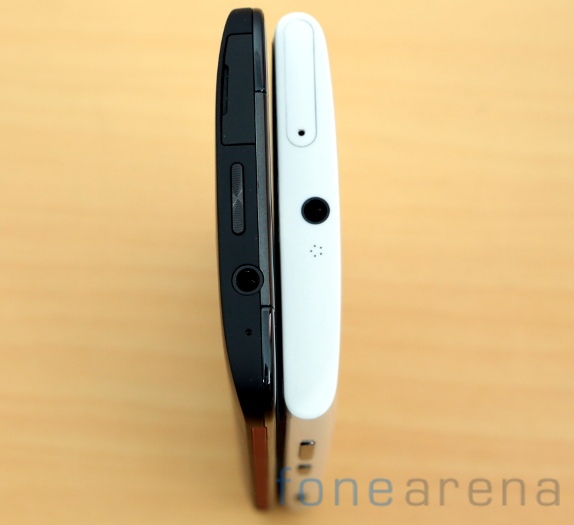
The HTC Butterfly has a design very similar to the One series of devices but there is a distinct difference in body design, with the unibody polycarbonate design from the One X replaced with a soft touch build and a design with three layers of materials. The Butterfly is long thanks to the huge 5 inch screen but not too unwieldy for big hands and thankfully, improving upon the bad ergonomics of the One X, the power button is now in the top center. The Lumia 920 too, is as wide as the Butterfly with a smaller display, and is 10.7mm thick vs 9.08 on the Butterfly. The 920 is a slightly shorter than the Butterfly which is a testament to the better ergonomic design of the HTC Butterfly despite the huge screen. The weight too is equally distributed on the Butterfly with 140g equally distributed over its body while the 920 is heavier with 185g in a smaller body, owing to some uncomfortable weight but not much of a deal breaker.
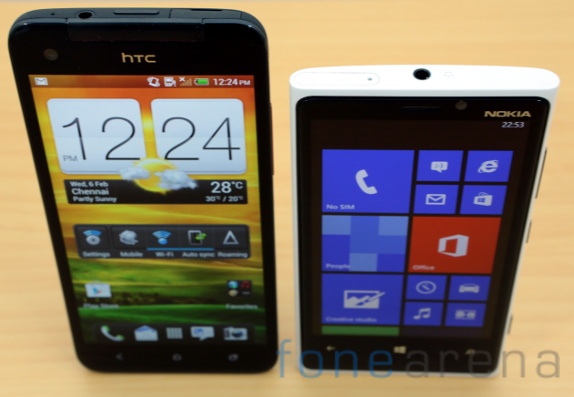
The display is a big deal in the butterfly and true to its specs, it is gorgeous and a sight to behold. Pictures or words cannot justify the richness and features of both these displays, so it is better to watch the above video to experience it almost life-like. However, the specs for both the displays are as follows. The Butterfly has a 5 inch 1920×1080(440 PPI 16:9) SLCD3 screen, with deep blacks and great color accuracy, while the Lumia 920 has a 4.5 inch screen with a 1280×768 resolution(332 PPI 15:9). The Lumia 920 packs a lot more features like super sensitivity that enables screen usage with gloves, smooth 60 Hz refresh rate, CBD polariser coating for better outdoor visibility and a reduced air gap, just like the Butterfly’s screen.
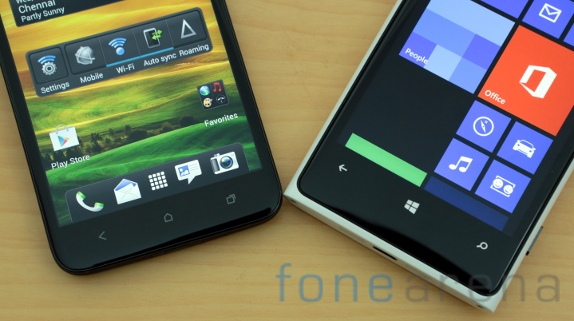
Both these devices run on a Qualcomm chipset, with the Butterfly running the top end Snapdragon S4 pro chipset, quad core processors at 1.5 GHz and Adreno 320 graphics and the Lumia 920 running the Snapdragon S4 plus dual core Krait chipset at 1.5 GHz and Adreno 225 graphics. There is no question of which has the better chipset here, and the Butterfly definitely deserves the top end name to it considering the power it has. However the Nokia Lumia 920 stills holds its own when it comes to day to day usage, but in raw performance, the S4 pro blows any other chipset in the market right now. In terms of other internal hardware details, the Butterfly has 2 GB of RAM and 16 GB of storage with expandable micro SD card slot while the Lumia 920 has 1 GB of RAM and 32 GB of storage with no options of expandable storage.
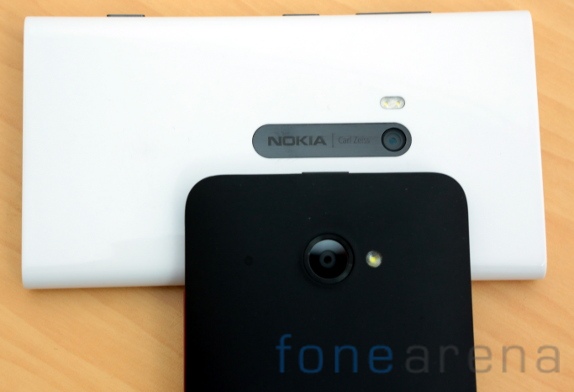
The camera department here is slightly skewed towards the Lumia 920 because the Butterfly seems to be having a similar camera unit as the HTC One X with its Imagesense chip that enables you to take pictures while taking a video, and of course, the f2.0 lens helps in some low light situations, but not all, because the king of low light is the competition and that is the Lumia 920 PureView camera. The 8.7 MP hybrid BSI sensor with a similar f2.0 lens and Optical image stabilisation. It also allows non shaky 1080p video with mono HAAC rich recording technology for audio. The butterfly too takes 1080p video, and has software stabilisation for video. Apart from the camera, the audio on the Lumia 920 and the Butterfly has some special hardware software combo in them. The butterfly has beats audio and the Lumia 920 has dolby stereo. Both of these technologies play a part in software enhancement of audio as well as in video playback(especially Dolby).

Finally we have to talk about the software, even though it is completely subjective to user preference and taste. We have gone through it enough in the above video to not justify it in text, as it might be too long of a read, so watch the video above and let us know how you feel in the comments below. Concluding, we have to say that if you are looking for the best Windows Phone on the market, it is definitely the Lumia 920 for you, with its amazing screen and an awesome camera that shines in stills as well as video. But if you are looking for bleeding edge technology, then it will be an Android phone for you, and talk about bleeding edge tech in the form of a 1080p screen and a S4 pro chipset. But you might want to hold out for the upcoming HTC M7 that promises a new sound and a camera experience or may be the new Samsung Galaxy S4 that is sure to bring a 1080p screen too.
Do let us know how you feel about these two devices in the comments section below. You can check out other Nokia Lumia 920 comparisons here.
